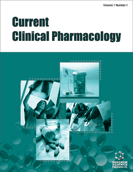Abstract
Background: The prevalence of anticoagulant use has increased in the United States. Medical providers have the responsibility to explain to patients the management of anticoagulant regimens before an invasive procedure. The pharmacologic characteristics of these medications, specifically their half-lives, are important in timing an interruption of anticoagulant therapy.
Objective: The authors review the current guidelines and recommendations for therapeutic interruption of anticoagulants and the involved pharmacologic factors.
Methods: Guidelines and other literature are summarized with discussion on the pharmacology of each medication. Recommendations on how and when to provide bridging for anticoagulants are discussed. Newer oral anticoagulants also are discussed, along with interruption recommendations.
Results: Literature reveals a conservative approach for using bridging when anticoagulation is interrupted because of higher risks of bleeding. Caution is advised when resuming anticoagulant therapy when neuraxial anesthesia is used.
Conclusion: Perioperative healthcare providers need to balance risks and benefits of anticoagulant therapy with its interruption preoperatively.
Keywords: Anticoagulants, bleeding risk, bridging therapy, direct thrombin inhibitors, factor Xa inhibitors, heparin, neuraxial anesthesia, perioperative care, surgery, warfarin.
Graphical Abstract
Current Clinical Pharmacology
Title:Perioperative Management of Anticoagulants
Volume: 12 Issue: 3
Author(s): Joan M. Irizarry-Alvarado*Lynsey A. Seim
Affiliation:
- Division of Consultative and Diagnostic Medicine, Mayo Clinic, Jacksonville, FL 32224,United States
Keywords: Anticoagulants, bleeding risk, bridging therapy, direct thrombin inhibitors, factor Xa inhibitors, heparin, neuraxial anesthesia, perioperative care, surgery, warfarin.
Abstract: Background: The prevalence of anticoagulant use has increased in the United States. Medical providers have the responsibility to explain to patients the management of anticoagulant regimens before an invasive procedure. The pharmacologic characteristics of these medications, specifically their half-lives, are important in timing an interruption of anticoagulant therapy.
Objective: The authors review the current guidelines and recommendations for therapeutic interruption of anticoagulants and the involved pharmacologic factors.
Methods: Guidelines and other literature are summarized with discussion on the pharmacology of each medication. Recommendations on how and when to provide bridging for anticoagulants are discussed. Newer oral anticoagulants also are discussed, along with interruption recommendations.
Results: Literature reveals a conservative approach for using bridging when anticoagulation is interrupted because of higher risks of bleeding. Caution is advised when resuming anticoagulant therapy when neuraxial anesthesia is used.
Conclusion: Perioperative healthcare providers need to balance risks and benefits of anticoagulant therapy with its interruption preoperatively.
Export Options
About this article
Cite this article as:
Irizarry-Alvarado M. Joan*, Seim A. Lynsey , Perioperative Management of Anticoagulants, Current Clinical Pharmacology 2017; 12 (3) . https://dx.doi.org/10.2174/1574884712666170822092709
| DOI https://dx.doi.org/10.2174/1574884712666170822092709 |
Print ISSN 1574-8847 |
| Publisher Name Bentham Science Publisher |
Online ISSN 2212-3938 |
 101
101 4
4 1
1Related Articles
-
Bio-inspired Biomaterials and their Drug Delivery Perspectives - A Review
Current Drug Metabolism Implications of Pharmacogenetics for Oral Anticoagulants Metabolism
Current Drug Metabolism Extensive Coronary Calcification: A Clinically Unrecognised Condition
Current Vascular Pharmacology Real-Time 3D Echocardiography: A New Gold Standard for Rheumatic Mitral Stenosis Assessment
Current Cardiology Reviews Capillary Degeneration and Right Ventricular Remodeling Due to Hypoxic Stress with Sugen5416
Current Vascular Pharmacology New Clinical Perspectives of Hypolipidemic Drug Therapy in Severe Hypercholesterolemia
Current Medicinal Chemistry Engineering Three-Dimensional Cardiac Microtissues for Potential Drug Screening Applications
Current Medicinal Chemistry Monoamine Receptors in the Regulation of Feeding Behaviour and Energy Balance
CNS & Neurological Disorders - Drug Targets Statin Therapy
Current Pharmaceutical Design Beneficial Effects of N-acetylcysteine and N-mercaptopropionylglycine on Ischemia Reperfusion Injury in the Heart
Current Medicinal Chemistry Obstructive Sleep Apnea and Obesity
Current Respiratory Medicine Reviews Management of Dyslipidaemia for the Prevention of Stroke: Clinical Practice Recommendations from the Lipid Association of India
Current Vascular Pharmacology <i>Uncaria tomentosa</i> (Willd. ex Schult.): Focus on Nutraceutical Aspects
Current Bioactive Compounds Gender and Cardiovascular Mortality in Northern and Southern European Populations
Current Pharmaceutical Design Medical devices regulatory aspects: a special focus on polymeric material based devices
Current Pharmaceutical Design Cardiac Chamber Volumetric Assessment Using 3D Ultrasound - A Review
Current Pharmaceutical Design Mechanical Circulatory Support of the Critically Ill Child Awaiting Heart Transplantation
Current Cardiology Reviews Deep Inspiration Breath-hold (DIBH) Technique to Reduce Cardiac Radiation Dose in the Management of Breast Cancer
Current Cancer Therapy Reviews Cardiac Multidetector Computed Tomography: Basic Physics of Image Acquisition and Clinical Applications
Current Cardiology Reviews ErbB Targeted Drugs and Angiogenesis
Current Vascular Pharmacology






















